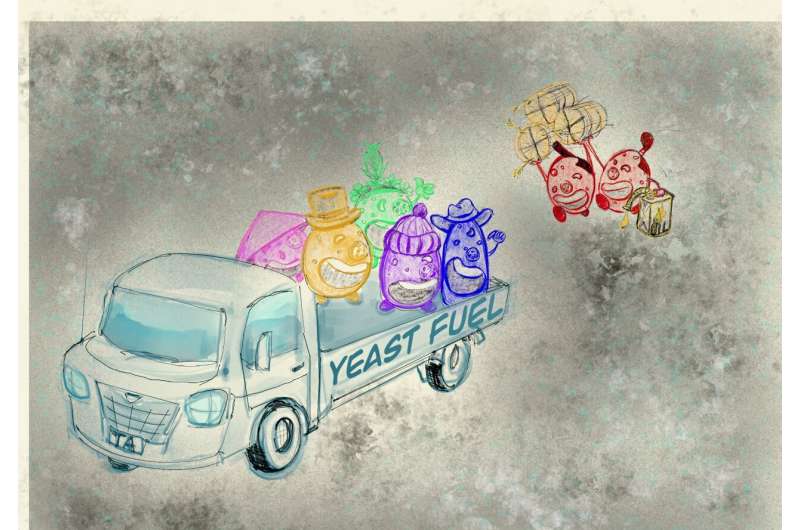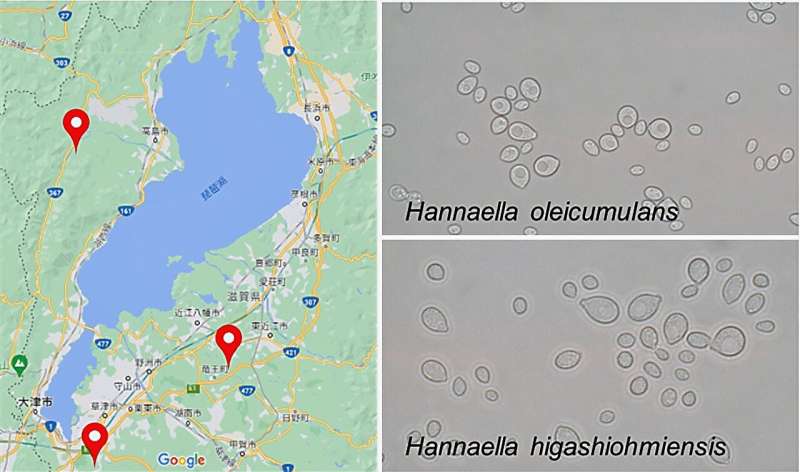This article has been reviewed according to Science X's editorial process and policies. Editors have highlighted the following attributes while ensuring the content's credibility:
fact-checked
trusted source
proofread
Researcher discover two new species of oil-forming yeast

Not all yeasts are created equally. Unlike the yeast used by bakers and beer brewers for converting sugars to carbon dioxide and fermentation, oleaginous yeasts convert sugars from inedible biomass into fats and oils.
A research group jointly led by Kyoto University and Ryukoku University has discovered two new species of oil-forming yeast in the soil of Shiga Prefecture. Published in the International Journal of Systematic and Evolutionary Microbiology, their study also examines the relationship between the prefecture's diverse climate and microbial ecology.
"We are gauging the potential benefits of applying oleaginous yeast to sustainable oil and fat production through isolation technology, particularly in reducing carbon dioxide emissions," says team leader and first author Ayumi Tanimura of KyotoU's Society Academia Collaboration for Innovation.
The discovery of two species—Hannaella oleicumulans, named after its oil-accumulating properties, and Hannaella higashiohmiensis from Higashiomi City—suggest the high potential of microbial resources in this region. They join the roughly 160 species of known oil yeast, including the previously known Lipomyces starkeyi, Rhodotorula toruloides, and Yarrowia lipolytica.
The diversity of yeast species in Japan reflects the latitudinal range of the Japanese archipelago. Shiga prefecture's diverse biomes—hydrosphere, forests, and arable land—and highly variable climate encourage this diversity. Tanimura promotes continuing efforts to search for new microbial resources in unexplored areas.

Focusing on the soil of Shiga Prefecture, Tanimura's team conducted DNA analyses and physiological, morphological, and biochemical characterization tests that supported the identification of the two Hannaella species. Culture tests next verified them as oleaginous yeasts, which can take up xylose to produce oil from plant biomass such as rice straw.
At publication, approximately 160 species were reported as oleaginous yeast, producing more than 20% of their dry cell weight as lipids.
"However, since lipid content easily changes with changing conditions in culture, we may need to redefine the term oleaginous yeast," notes Tanimura.
The similar composition of vegetable oils to lipids makes this type of yeast a possible alternative to petroleum diesel fuel.
"Having gained insight into the diversity of oilseed yeasts, we plan to test enhanced methods for obtaining new strains with higher oil and fat productivity or those that produce only specific fatty acids," adds Tanimura.
More information: Ayumi Tanimura et al, Hannaella oleicumulans sp. nov. and Hannaella higashiohmiensis sp. nov., two novel oleaginous basidiomycetous yeast species, International Journal of Systematic and Evolutionary Microbiology (2023). DOI: 10.1099/ijsem.0.006027
Provided by Kyoto University





















